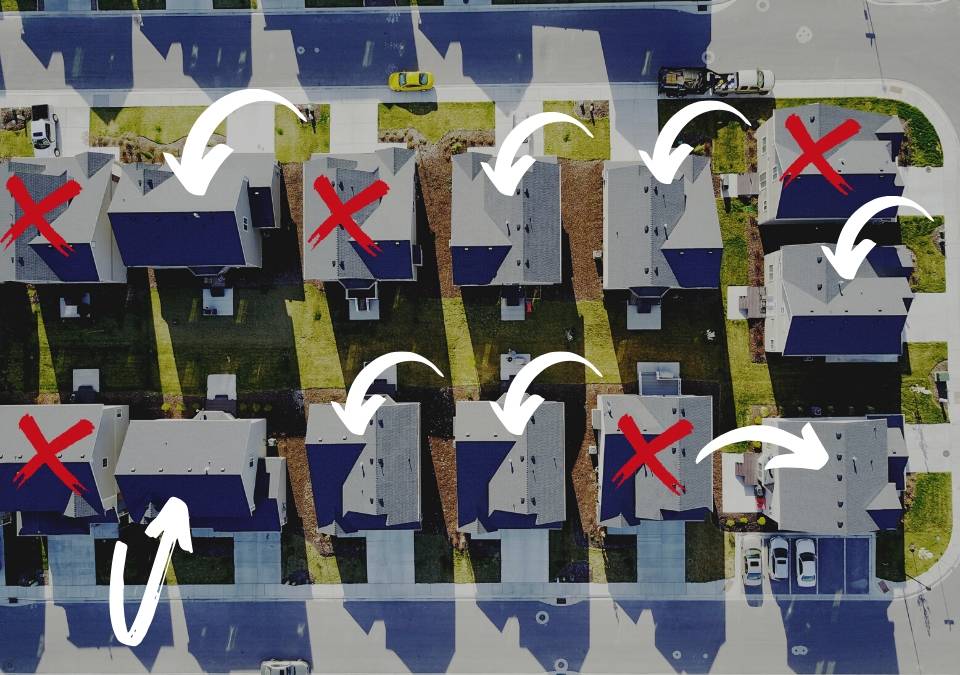With candidates these days having limited options in reaching out to voters, IP Targeting offers a solution to directly reach specific households online. If you are wondering, “What is political IP targeting?”, it is a form of advertising that allows candidates and campaigns to directly target online ads to mobile devices and computers at an individual household level.
IP Targeting allows political advertisers to be very specific with who they reach – and at a fraction of the cost of many other advertising methods. The idea is that your ads appear on all devices – home computers, tablets, cell phones – that someone uses to view news sites, email portals and other popular sites across the web.
There are other benefits with IP advertising. They include cost-effectiveness, control over where your ads are shown, customization of how your ads will appear, targeting multiple demographics and geographic locations, and the ability to manage and schedule your online advertising.
Unlike radio or television advertising, IP Targeting works best when it is used selectively. Putting the right message before the right voter can be very persuasive. It helps to create a plan of who you want to reach, combined with the message you want to present.
Perfect to get out the vote for primaries and special elections. Political campaign advertising to regular voters helps improve turnout on Election Day.
Listen to this post:
How does political IP targeting work?
- Think of IP Targeting like political digital direct mail. Your ads can display on devices within a particular household. Your ads appear on websites through large online ad networks. Your ads are included as part of the inventory those networks display. For example, your ads can appear on news sites, email portals and other websites that carry online ads.
- You can precisely target voters. IP marketing uses individual IP addresses to target specific households. Your digital ads reach exact targets. It is more efficient than advertising that blankets an area. Hundreds of political campaigns across the country use this technology every election cycle. Most candidates target specific segments of their voter list.
- How much does IP marketing cost? IP ads are based on a CPM model, or cost per thousand impressions. This means the ads are charged per every thousand impressions (view on a screen). For example, with a $25 CPM, one thousand ad impressions costs $25. (View our IP pricing calculator.)
Like most advertising for a political campaign, IP targeting is best used for branding. The more of your ads voters see, the more effective they become. We recommend an exposure of at least a level of 20 impressions per household. And if you set a level that low, we recommend compressing the time frame of your ad campaign to a week or so.

Sample ad creatives used in political IP marketing campaigns
Online ads vary in size, and you’ll want your own display ads to match those sizes so they appear in as many places as possible. We recommend that clients have a creative (a banner) in each major ad size to maximize available ad inventory. While you can run ad campaigns with fewer sizes, it may limit your overall exposure.

Example of 250×300 pixel IP Marketing ad.
Typical ad sizes include:
- 300×250 (pixels)
- 336×280 (pixels)
- 728×90 (pixels)
- 320×50 (pixels)
- 160×600 (pixels)
- 300×50 (pixels)
Political IP marketing campaigns are typically run for two reasons. The first is to build marketing awareness to a specific voter audience. This may be used in conjunction with a mailing, so the recipients see both a print and online message. The second reason is typically for getting out the vote efforts.
Consider running targeted ads during these times:
- Before a primary
- At the start of early voting
- Just before a major mail drop
- Before a candidate canvasses for more constituent recognition
- As part of your get out the vote messaging.
There are a few requirements for running political display ads. Some form of identification and disclaimer must be visible (and readable) on each advertisement. This can be your logo and the name of your organization. We make sure your ad designs are compliant.
If you’ve advertised a campaign on Facebook, you’ll find the requirements for IP targeting to be a lot less stringent.
Strategies for creating advertising audiences from your voter list

Sample political IP Targeting display ad.
By Party: This is the most common way for political campaigns to determine who they want to reach through their IP Targeting. They take a district voter list, narrow it to voters of their own party, and target those addresses. Besides just targeting voters of a party, we recommend targeting active voters. This can mean people who voted in 2 of the last 3 primaries, 3 of the last 4 general elections, etc…
By Location: Why should everyone in your district get the same messaging? Perhaps the ads in one location should highlight something different than other areas. Because IP Targeting is based on addresses, it’s simple to parse locations by towns, zip codes or counties. If you have a campaign message you want to send to a specific location, it’s easy to segment your audience.
By Event: This applies mainly ‘Get Out The Vote’ messaging. This could be for primary day, the general election – or even when mail-in voting begins. We recommend targeting active voters for this sort of messaging. Considering the relatively low level of general voting participation, it makes sense to focus on those who will actually make it to the polls (or mail in a ballot).
By Issue: With the right voter or demographic data, you can determine what issues are important to what households. When shown to the right audience, issue-specific ads can perform very well in getting attention and clicks.
By Donor List: Just as businesses can target previous customer addresses, political campaigns can target previous donors. This would be the one case where you might want to look for a particular ROI (return on investment) on an ad campaign, rather than the amount of exposure generated.
By a Combination of the Above: One way to further develop a campaign is to segment your targets through multiple criteria. For example, you may want to target households of a single party in a particular location that are receptive to a particular issue. For example, you could promote your position on a regional issue specifically to households in an area effected by that issue.
Rather than generic messaging, like ‘Vote for” ads, targeted and focused political advertising gets more attention. Consider creating multiple, smaller ad campaigns targeting specific audiences with specific messaging. If you want to break through the clutter of state and national political advertising, you want to make your message as relevant to your audience as possible.
In many down-ballot races, a lot of undecided voters lean toward the candidate that they have been most exposed to. Appearing on a voter’s mobile and computer screens will get you noticed. The precision and cost of IP advertising offers several advantages over print, radio, or television advertising. When combined with other advertising mediums (like print), you’ll increase your overall exposure.
Interested in IP Targeting for your political campaign? We offer competitive rates and full creative design. We can help you create a strategy to effectively reach your voters.
« 6 Website Secrets Your Political Opponent Doesn’t Know
A List of Our Best County Candidate Campaign Slogans »
Tags: geotargeting









